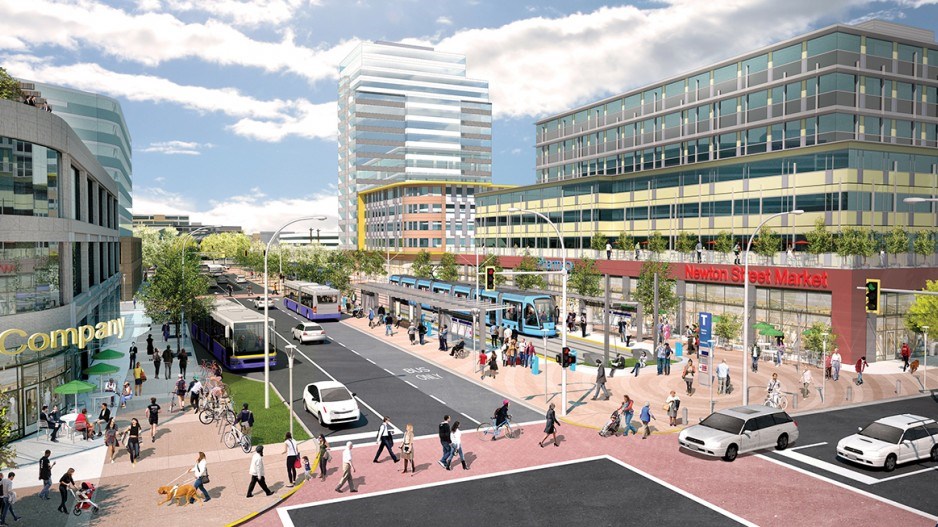When it comes to promised transportation infrastructure projects, no community has been in the queue longer than Surrey.
The city has been waiting for a final green light for its proposed light-rail transit (LRT) line from the new provincial government in conjunction with federal funding, but the project has already gone through years of reviews, planning and consultations, much to the dismay of the local community.
The Surrey LRT line, a two-phase project similar to Vancouver’s Broadway subway line extension, was initially pitched by Dianne Watts before she became Surrey’s mayor in 2005. Public consultation on the process has been going on since 2010; however, a segment of the community, which now officially includes Langley city council, is campaigning for a SkyTrain line extension instead of LRT, southeast along the Fraser Highway.
One of the communities that will benefit the most from the first proposed line, which would run south from Surrey Central to 72nd Avenue along the King George corridor, is Newton.
Philip Aguirre, executive director of the Newton Business Improvement Association, noted that the community’s growing population requires better transportation options.
“Newton is the fifth-largest community in B.C.,” Aguirre said. “It’s bigger than Kelowna, it’s bigger than Langley, and a community that size deserves and needs LRT.”
Newton’s population is about 146,000, and the area accounts for 33% of Surrey’s overall business community, according to the association.
Aguirre said an LRT line would help turn Newton into a cultural and entertainment district for the whole city.
He’s also well aware of the business problems stemming from construction of the SkyTrain Canada Line along Cambie Street and how prolonged construction might affect Newton. Aguirre said planning is underway to rally the community around businesses that might be negatively affected by work on the project.
He recalls when the idea of expanding the original SkyTrain line (which currently stops where King George Boulevard and the Fraser Highway connect) was initially pitched in 1994.
“The result of all of that is all the vacant lots in the area. Developers are still waiting to cash in on that investment.… I’m still trying to be positive about it, but obviously, I think the community would be devastated if the SkyTrain went to Langley first.”
Anita Huberman, chief executive officer of the Surrey Board of Trade, recently met with Transportation and Infrastructure Minister Claire Trevena about Surrey’s proposed LRT line. Huberman pitched an ambitious idea: build both LRT lines simultaneously – all 27 kilometres and 19 stops – after breaking ground on the project in early 2019. Huberman added she expects to hear back from the provincial government before the 2018 provincial budget is announced in February.
She said the Surrey Board of Trade has also launched an education campaign to combat the idea that running the SkyTrain line to Langley instead of building two LRT lines is the best option for the Fraser Valley’s transportation needs.
Paul Lee, LRT program manager for the City of Surrey, said one of the other LRT lines the city will seek to emulate in some ways is Portland, Oregon’s Metropolitan Area Express. Lee said a city delegation went to Portland in 2011, and he has made numerous trips to the area to study it before and since.
“It is the system that would have the most similarities concerning what we would like to build,” he said. “Portland continues to build something we call ‘urban-style light rail,’ which is low-floor and runs in the middle of the roadway and is a real catalyst for transit-orientated development, mixed-use development and so forth.”
Ridership has almost doubled on Portland’s light-rail system from 2000 (17,65 million originating riders) to 2017, when it had 31,67 million riders. Portland has a population of 639,863 people as of 2016, compared with Surrey’s 525,220. Portland’s system has five lines with 97 stations. It started with two short lines back in the late 1980s.
Lee also noted there are 12 tentatively federally funded projects in various stages of development for light rapid transit across Canada, including eight in Ontario, two in Edmonton and one in Calgary, and that they are all “low-floor” and not raised like Vancouver’s SkyTrain network.




